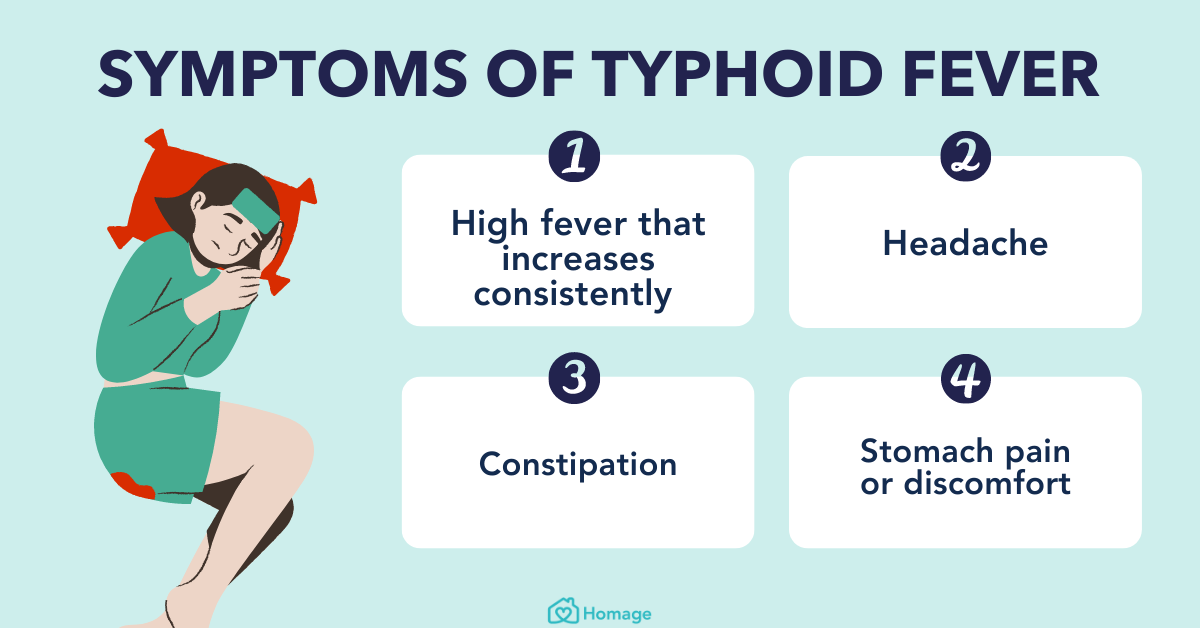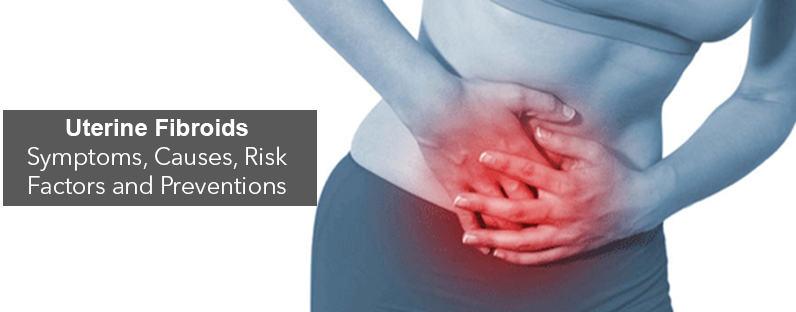health
Why Are We Ignoring Mental Health Needs of Our Aging Population? Understanding the Lack of Anxiety Screening in Older Americans

As we age, our physical health tends to deteriorate and require more attention – but what about our mental well-being? Unfortunately, as a society, we often overlook the importance of mental health care for older adults. Anxiety is one of the most common mental health disorders in aging Americans, yet it often goes undetected and untreated due to a variety of factors. In this blog post, we will explore why anxiety screening is lacking in our aging population and how ignoring these needs can have serious consequences for not only individuals but also their families and communities. Let’s delve into this critical issue together!
The prevalence of mental health disorders in older adults
It is estimated that 20% of adults aged 55 or older suffer from a mental health disorder, with the most common being anxiety and depression. Unfortunately, older adults are often overlooked when it comes to mental health screening and treatment. This is likely due to a number of factors, including the misconception that mental health problems are a normal part of aging, that mental health disorders are not as serious as physical health disorders, and that older adults are not interested in or able to receive treatment.
There is a growing body of evidence, however, that suggests that mental health disorders in older adults are both common and treatable. For example, a recent study found that nearly 60% of older adults who were screened for anxiety and depression were found to have one or both disorders. Furthermore, another study found that only 38% of older adults with depression received treatment for their condition.
These findings highlight the need for more awareness about mental health disorders in older adults and the importance of screenings for these conditions. Mental health professionals should be trained to recognize the signs and symptoms of mental health disorders in older adults, and efforts should be made to destigmatize mental illness in this population so that more individuals feel comfortable seeking help.
The lack of anxiety screening in older Americans
It’s no secret that our aging population is growing. And with this growth comes an increased need for mental health services. But sadly, mental health needs are often overlooked in older adults. A big part of the problem is the lack of anxiety screening in older Americans.
Anxiety disorders are common in older adults, but they often go unrecognized and untreated. Part of the reason for this is that anxiety disorders can be mistaken for other conditions, such as dementia or depression. Another reason is that older adults may be reluctant to seek help for mental health problems, fearing that they will be seen as weak or crazy.
The lack of anxiety screening in older Americans is a major problem because anxiety disorders can have a profound impact on quality of life. Anxiety can lead to social isolation, sleep problems, and difficulty concentrating. It can also make chronic health problems worse.
Fortunately, there are steps we can take to address the problem of anxiety screening in older Americans. Health care providers should be trained to recognize the signs and symptoms of anxiety disorders in older adults. Older adults should also be made aware of the resources available to them, such as counseling and support groups.
The possible reasons for the lack of anxiety screening in older adults
It’s no secret that our aging population is facing a mental health crisis. With an ever-increasing life expectancy, more and more older adults are dealing with age-related mental health issues such as anxiety, depression, and dementia. Yet, despite the growing prevalence of mental health problems in this population, there is still a lack of anxiety screening in older adults.
There are a number of possible reasons for this lack of screening. One reason may be that many older adults are reluctant to seek help for their mental health problems. They may feel like they should be able to cope with their problems on their own, or they may be worried about the stigma attached to mental illness. Additionally, many older adults may not be aware that anxiety disorders are common in people their age. They may not realize that their symptoms are indicative of an underlying problem and therefore never seek help.
Another reason for the lack of anxiety screening in older adults may be that primary care providers often fail to screen for these disorders. This is likely due to a number of factors, including time constraints and a lack of training in how to recognize and diagnose anxiety disorders. Additionally, many primary care providers simply aren’t aware of the importance of screening for anxiety in this population.
Whatever the reasons for the lack of anxiety screening in older adults, it’s clear that something needs to be done to address this problem. With more and more older adults living with mental health problems, it’s essential that we find ways to better
The consequences of the lack of anxiety screening in older adults
As our population ages, the number of adults over the age of 65 is expected to more than double by the year 2050. And yet, despite this significant increase in the aging population, mental health screening for older adults is still not routine practice in many primary care settings.
There are a number of reasons why anxiety screening is not more widely used with older adults. One reason is that many older adults are reluctant to talk about their mental health with their doctor. They may worry that their doctor will think they are “crazy” or that they will be sent to a psychiatric hospital.
Another reason why anxiety screening is not more common in older adults is that many primary care doctors simply don’t have the time to screen all of their patients for mental health conditions. With the increasing demands placed on primary care doctors, it’s not surprising that some screenings fall by the wayside.
However, the lack of anxiety screening in older adults can have serious consequences. Older adults who suffer from anxiety disorders are at increased risk for developing depression, and they are also more likely to experience problems with memory and concentration. In addition, anxiety disorders can lead to social isolation and increased use of healthcare resources.
Given the potential consequences of untreated anxiety in older adults, it’s important that primary care providers find ways to make mental health screening a part of routine care for this population. One way to do this is to partner with community organizations that offer mental health
What can be done to improve mental health screening for older adults?
It is estimated that one in six adults over the age of 55 suffers from some form of mental illness, yet only a fraction of these individuals receive any kind of treatment. This is often due to the fact that mental health screening for older adults is not routinely conducted, either by primary care physicians or by mental health professionals.
There are several reasons why mental health screening for older adults is not more common. One reason is that many older adults are reluctant to discuss their mental health with their doctor, fearing that they will be perceived as weak or crazy. Additionally, many older adults do not have regular contact with their primary care physician, making it less likely that they will be screened for mental health problems. Finally, even when mental health problems are detected, there are often no available treatments, due to a lack of insurance coverage or other resources.
Despite these challenges, there are steps that can be taken to improve mental health screening for older adults. One way to overcome the reluctance of older adults to discuss their mental health is to provide them with information about the prevalence of mental illness in later life and the importance of early detection and treatment. It is also important to make sure that primary care physicians and other healthcare providers are trained in how to identify and assess for depression and other common mental disorders in older adults. When possible, providers should also refer patients to community-based resources or specialists who can provide additional support and treatment. Finally, insurance companies and policy-makers should work to ensure that
Conclusion
It is clear that the mental health needs of our aging population are being overlooked and neglected. This lack of attention has serious consequences both for individual seniors, their families, and society as a whole. We must do better in addressing these urgent issues by increasing access to mental health services, promoting awareness campaigns on anxiety disorders among older adults, and providing more comprehensive mental health screenings. Only then can we hope to alleviate the suffering experienced by many elderly Americans due to untreated or undiagnosed anxiety problems.
health
Typhoid Fever: Causes, Symptoms And Treatment

Introduction
Typhoid fever is a serious infection that affects millions of people worldwide each year. Caused by the bacterium Salmonella typhi, typhoid spreads through contaminated food and water, especially in areas with poor sanitation. Early signs can be mild—a low-grade fever or headache—but without prompt treatment, the illness can lead to high fever, severe stomach pain, and life-threatening complications. In this guide, we’ll explain the causes of typhoid, how the infection spreads, the symptoms to watch for, and the most effective treatments available. By understanding these key points, you can protect yourself and your family from this preventable disease.
What Is Typhoid Fever?
Typhoid fever is a bacterial illness transmitted through ingestion of food or water contaminated with Salmonella typhi. Unlike common food poisoning, typhoid can invade the bloodstream and spread throughout the body. It remains a global health challenge, with the highest burden in South Asia and sub-Saharan Africa, but travelers to any region with poor water treatment can be at risk.
Causes of Typhoid Fever
The root cause of typhoid fever is the bacterium Salmonella enterica serotype Typhi. Key factors include:
- Contaminated Water: Drinking or cooking with water tainted by sewage containing S. typhi.
- Contaminated Food: Fruits, vegetables, and ready-to-eat foods washed or handled by infected individuals.
- Poor Sanitation: Lack of clean toilets and hand-washing facilities spreads bacteria.
- Carrier Transmission: Some recovered individuals carry S. typhi in their gallbladders and shed bacteria in stool for months or years.
How Typhoid Spreads
Understanding transmission helps with prevention. S. typhi spreads via the “fecal-oral route”:
- An infected person uses the bathroom and doesn’t wash hands properly.
- Bacteria remain on hands and transfer to food, water, or surfaces.
- Others consume the contaminated items and become infected.
Good hygiene and safe water practices break this cycle.
Symptoms of Typhoid Fever
Typhoid symptoms typically appear 6–30 days after exposure. They develop in stages:
- Week 1:
- Low-grade fever rising each day
- Headache and general weakness
- Abdominal discomfort
- Week 2:
- High fever (up to 104°F or 40°C)
- Persistent cough
- Rose-colored spots on chest or abdomen
- Severe stomach pain
- Week 3 and Beyond:
- Diarrhea or constipation
- Delirium, confusion, or severe weakness
- Intestinal bleeding or perforation (rare but serious)
Not everyone shows all signs. Children and elderly patients may have atypical symptoms like lethargy or lack of appetite.
Diagnosing Typhoid Fever
Early diagnosis speeds up treatment and reduces complications. Common tests include:
- Blood Culture: Detects S. typhi in the bloodstream—most accurate in the first week.
- Stool or Urine Culture: Used if blood cultures are negative or illness is prolonged.
- Widal Test: Measures antibodies against S. typhi but can give false positives, especially where typhoid is common.
Doctors also consider travel history, exposure risk, and symptom patterns.
Effective Treatment for Typhoid Fever
Prompt antibiotic treatment is crucial. Commonly prescribed medications:
- Ciprofloxacin or Ofloxacin: Shown effective in areas with low antibiotic resistance.
- Azithromycin: Preferred in regions where fluoroquinolone resistance is high.
- Third-Generation Cephalosporins (e.g., Ceftriaxone): Used for severe cases and intravenous therapy.
Supportive Care
- Hydration: Oral rehydration solutions replace lost fluids and electrolytes.
- Nutrition: Easy-to-digest foods—rice, bananas, and clear broths—aid recovery.
- Rest: Complete bed rest speeds healing and prevents complications.
Duration of Therapy
Treatment often lasts 7–14 days. Finish the full course even if symptoms improve to prevent relapse and resistance.
Preventing Typhoid Fever
Prevention combines vaccines, hygiene, and safe food practices:
1. Vaccination
- Oral Live-Attenuated Vaccine: Taken as four pills over one week; protective for 5–7 years.
- Injectable Capsular Polysaccharide Vaccine: Single shot; protection for ~2 years.
Vaccines are recommended for travelers to high-risk areas and close contacts of chronic carriers.
2. Safe Water and Food
- Drink bottled or boiled water; avoid ice in countries with unsafe water.
- Eat fully cooked foods served hot; avoid raw produce unless you peel it yourself.
- Wash hands thoroughly with soap and water before eating and after using the bathroom.
3. Personal Hygiene
- Wash hands for at least 20 seconds, especially after bathroom use.
- Use hand sanitizer (60% alcohol) when soap and water are unavailable.
- Maintain clean kitchen surfaces and utensils.
Risk Factors for Typhoid Fever
Certain groups face higher risk:
- Travelers: Especially to South Asia, Africa, and parts of Latin America.
- Healthcare Workers: Contact with infected patients or lab cultures.
- Those in Endemic Regions: Limited access to clean water and sanitation.
- Household Contacts: Family members of chronic carriers.
Awareness of risk factors guides targeted prevention measures.
Complications and When to Seek Emergency Care
Untreated typhoid can cause severe issues:
- Intestinal Perforation: Hole in the gut lining leading to life-threatening infection.
- Massive Gastrointestinal Bleeding: May require blood transfusion.
- Encephalopathy: Brain involvement leading to confusion or seizures.
- Sepsis: Widespread infection in the bloodstream.
Warning Signs
Seek immediate medical attention if you notice:
- Sudden severe belly pain
- Bloody or black, tarry stools
- High, unrelenting fever
- Extreme drowsiness or confusion
Early hospital care can prevent fatal outcomes.
Living with and Recovering from Typhoid
Most people recover fully with treatment but should follow these tips:
- Rest and Nutrition: Gradually increase activity and consume balanced meals rich in protein and vitamins.
- Follow-Up Testing: Ensure the infection has cleared through repeat cultures.
- Avoid Spreading: Stay home until your doctor confirms you’re no longer contagious (usually 48 hours after starting antibiotics).
Returning to normal life may take weeks; pace yourself to prevent relapse.
Conclusion
Typhoid fever remains a global health threat but is preventable and treatable with the right measures. Understanding the causes of typhoid, recognizing early symptoms, and seeking prompt medical treatment with antibiotics are crucial steps. Vaccination, safe food and water practices, and good hand hygiene protect both travelers and residents in endemic areas. Although severe complications can occur, most patients recover fully when diagnosed and treated early. By staying informed and following expert guidelines, you can safeguard yourself and your loved ones from typhoid and contribute to a healthier world.
health
Stillbirth vs Stillborn: Symptoms Causes Risk Factors

Introduction
The joy of pregnancy can turn into heartbreak when a baby dies in the womb late in pregnancy—known as stillbirth. Parents often confuse the terms stillbirth and stillborn, though they refer to different aspects of the same tragic outcome. Understanding the symptoms, causes, and risk factors helps expectant parents, caregivers, and healthcare providers stay vigilant and, in some cases, prevent these losses. In this article, we’ll clarify key definitions, explore warning signs, uncover common causes, and highlight risk factors, all in clear, easy-to-read language supported by medical guidelines.
Definitions: Stillbirth vs. Stillborn
- Stillbirth: A stillbirth occurs when a fetus dies in the womb at or after 20 weeks of pregnancy (in some countries, 24 weeks). The term describes the event.
- Stillborn: Refers to the baby who is born deceased following a stillbirth. It describes the baby’s condition at birth.
Both terms fall under fetal demise, but understanding the distinction helps with clear communication between families and healthcare teams.
Recognizing Symptoms: Warning Signs of Stillbirth
Often, the first sign of a problem is a change in your baby’s movement patterns. Key stillbirth symptoms to watch for include:
- Reduced Fetal Movements: A well-known sign is when kicks, rolls, or jabs decrease significantly or stop entirely.
- No Heartbeat: During a prenatal check, your provider may not detect a heartbeat with a Doppler device.
- Cramping or Pain: Some women report strong cramps or back pain near the time of fetal loss.
- Bleeding or Fluid Leakage: Though not always present, vaginal bleeding or a sudden gush of fluid may occur.
What To Do if You Notice Symptoms
- Immediate Contact: Call your midwife or obstetrician right away.
- Nonstress Test: You may have a test to monitor your baby’s heart rate and movements.
- Ultrasound Scan: A quick scan confirms fetal heartbeat and well-being.
Early detection can sometimes allow interventions to save the baby or manage maternal health risks.
Common Causes of Stillbirth
While each case is unique, several causes of stillbirth are frequently identified:
1. Placental Problems
- Placental Abruption: Early separation of the placenta reduces oxygen flow to the baby.
- Placental Insufficiency: Poor placental development or damage limits nutrient delivery.
2. Birth Defects
- Chromosomal Abnormalities: Trisomy 13, 18, or other genetic disorders can be incompatible with life.
- Structural Malformations: Severe heart, brain, or spinal defects may lead to fetal death.
3. Infection
- Maternal Infections: Listeria, syphilis, or viral infections like cytomegalovirus (CMV) can cross the placenta.
- Chorioamnionitis: Infection of the membranes around the baby.
4. Umbilical Cord Issues
- Cord Prolapse: Cord slips into the birth canal, cutting off blood flow.
- Cord Knots or True Knots: Tight knots restrict oxygen-rich blood.
5. Maternal Health Conditions
- Diabetes or High Blood Pressure: Poorly controlled diabetes or preeclampsia increases risk.
- Autoimmune Disorders: Lupus or antiphospholipid syndrome can impair placental blood flow.
Key Risk Factors for Stillbirth
Some factors raise the likelihood of stillbirth. Recognizing them helps with targeted monitoring:
| Risk Factor | Why It Matters |
|---|---|
| Advanced Maternal Age (>35 years) | Higher rates of chromosomal issues |
| Obesity (BMI ≥30) | Increased risk of preeclampsia and diabetes |
| Smoking and Substance Use | Reduces oxygen delivery to fetus |
| Low Prenatal Care | Missed screenings for growth and health problems |
| Previous Stillbirth | History of fetal loss raises recurrence risk |
| Multiple Pregnancy (Twins, Triplets) | Strain on placenta; cord entanglement possible |
| Ethnic and Socioeconomic Disparities | Access to care and chronic stress factors |
Pregnant individuals with one or more risk factors should receive extra monitoring—more frequent ultrasounds, nonstress tests, and blood pressure checks.
Diagnosing Stillbirth
When stillbirth is suspected, a series of steps confirm the diagnosis and identify causes:
- Ultrasound Examination: Ensures accurate determination of fetal demise and checks amniotic fluid levels.
- Fetal Monitoring: Electronic fetal monitoring confirms absence of heartbeat.
- Autopsy and Placental Examination: After delivery, examinations may reveal underlying factors like infection or placenta issues.
- Genetic Testing: Karyotyping and microarray can detect chromosomal abnormalities.
These diagnostic steps provide closure for families and guide future pregnancy planning.
Preventing Stillbirth: Best Practices
While not all stillbirths are avoidable, certain strategies reduce risks:
A. Regular Prenatal Visits
- Early Booking: First visit before 12 weeks.
- Routine Checks: Every month until 28 weeks, then biweekly until 36 weeks, then weekly.
B. Fetal Movement Monitoring
- Kick Counts: Spend 30 minutes daily after 28 weeks counting at least 10 movements. Contact provider if counts fall.
C. Managing Health Conditions
- Blood Sugar Control: Tight glucose management for diabetic mothers.
- Blood Pressure Monitoring: Treat hypertension and preeclampsia promptly.
D. Healthy Lifestyle Choices
- Quit Smoking: Seek support to stop smoking and avoid secondhand smoke.
- Balanced Diet: Include folic acid, iron, calcium, and omega-3 fatty acids.
- Safe Weight Gain: Follow your provider’s guidelines to avoid excessive gain.
E. Specialized Testing
- Growth Scans: Ultrasounds at 28 and 36 weeks to detect small-for-gestational-age babies.
- Doppler Studies: Check blood flow in the umbilical artery for high-risk pregnancies.
Supporting Families After Stillbirth
The loss of a baby is devastating. Emotional and psychological support is crucial:
- Counseling Services: Professional grief counseling and support groups.
- Memory-Making: Photos, footprints, and mementos can help with healing.
- Sibling Support: Explain the loss to older children with age-appropriate language and activities.
Healthcare teams should offer compassionate care, clear information, and follow-up mental health referrals.
Planning Future Pregnancies
After a stillbirth, many parents worry about the next pregnancy. Careful planning helps:
- Medical Review: Assess placental pathology and genetic results.
- Preconception Care: Address health issues—optimize weight, control diabetes, stop smoking.
- Early Monitoring: First-trimester ultrasound and chronic disease management.
- High-Risk Care: Consider referral to a maternal-fetal medicine specialist if needed.
With tailored care plans, most parents go on to have healthy pregnancies and babies.
Conclusion
Understanding the difference between stillbirth (the event) and stillborn (the baby) helps families and healthcare providers communicate clearly during a tragic time. Recognizing the symptoms—especially reduced fetal movement—leads to early intervention. Exploring Causes of stillbirth, from placental issues to infections, and knowing risk factors like maternal age or previous loss enable targeted monitoring. While not all stillbirths can be prevented, best practices—regular prenatal care, fetal movement tracking, healthy lifestyles, and specialized testing—reduce risk. For those facing this loss, compassionate support and careful planning pave the way for healing and safer future pregnancies. Armed with knowledge and care, families and clinicians can work together to protect the gift of life.
health
Babies Vaccination Awareness Guideline

Introduction
Vaccinating your baby is one of the most important steps you can take to protect their health and well-being. Babies vaccination awareness guideline helps parents understand which vaccines their child needs, when they should be given, and why each shot matters. Immunizations shield little ones from serious diseases like measles, whooping cough, and polio. In this article, we’ll cover the recommended vaccination schedule, explain how vaccines work, address safety concerns, and share tips for a smooth visit to the doctor. With clear, easy-to-read advice, you’ll feel confident keeping your baby safe and healthy.
1. Why Vaccinations Matter
Vaccines train a baby’s immune system by introducing a harmless piece of a disease-causing germ. This “practice run” prepares the body to fight real infections, preventing serious illness. Key benefits include:
- Protection from Severe Diseases: Vaccines prevent life-threatening infections like chickenpox, hepatitis B, and pneumococcal disease.
- Herd Immunity: When most of the community is vaccinated, germs can’t spread, protecting those who can’t get vaccines (allergies, young age).
- Fewer Doctor Visits: Healthy, vaccinated children have fewer sick days and hospital stays.
- Long-Term Health: Many vaccines last into adulthood, reducing lifetime risk of certain cancers and complications.
2. Recommended Vaccination Schedule
Below is a simplified table of the common vaccines given in the first two years of life. Always follow your pediatrician’s local guidelines, as schedules may vary by country.
| Age | Vaccine | Protects Against |
|---|---|---|
| Birth | Hepatitis B (HepB) #1 | Hepatitis B virus |
| 1–2 months | HepB #2; DTaP #1; Hib #1; IPV #1; PCV13 #1; RV #1 | Diphtheria, Tetanus, Pertussis; Haemophilus influenzae type b; Polio; Pneumococcus; Rotavirus |
| 4 months | DTaP #2; Hib #2; IPV #2; PCV13 #2; RV #2 | Same as above |
| 6 months | HepB #3; DTaP #3; Hib #3; IPV #3; PCV13 #3; RV #3; Influenza #1 | Includes yearly flu shot |
| 12–15 months | MMR #1; Varicella #1; Hib #4; PCV13 #4; HepA #1 | Measles, Mumps, Rubella; Chickenpox; Hepatitis A |
| 15–18 months | DTaP #4 | Diphtheria, Tetanus, Pertussis |
| 4–6 years | DTaP #5; IPV #4; MMR #2; Varicella #2 | Booster doses |
Key Notes:
- Live Vaccines (MMR, Varicella, RV): Contain weakened germs; avoid in immunocompromised infants.
- Inactivated Vaccines (IPV, HepB, DTaP): Contain killed germs or pieces; safe for most babies.
- Seasonal Flu Shot: Annual vaccination starting at 6 months of age.
3. Preparing for Vaccination Visits
To make the experience easier:
- Bring Comfort Items: Favorite toy, blanket, or pacifier so baby feels secure.
- Feed Beforehand: A full tummy can calm a fussy baby.
- Dress for Access: Opt for loose sleeves or layers to expose the thigh or upper arm.
- Stay Calm: Babies pick up on parental emotions; a calm caregiver helps them relax.
- Ask Questions: Write down any concerns about timing, possible side effects, or multiple shots.
4. Managing Common Side Effects
Mild reactions show the vaccine is working. Typical side effects include:
- Fussiness or Irritability: Lasts a few hours to a day.
- Fever: Up to 102°F (38.9°C); treat with approved infant acetaminophen per doctor’s advice.
- Redness or Swelling at Injection Site: Apply a cool, damp cloth.
- Sleepiness or Reduced Appetite: Offer breast milk or formula more frequently.
When to Call the Doctor:
- High fever lasting over 48 hours
- Seizures or uncontrollable crying
- Signs of allergic reaction (hives, difficulty breathing, swelling)
5. Vaccine Safety and Myths
Vaccines undergo rigorous testing before approval and continued monitoring post-licensure. Common myths debunked:
- Vaccines Cause Autism: Extensive studies show no link between vaccines and autism spectrum disorder.
- Natural Immunity Is Better: Disease-related immunity can come at the cost of serious complications; vaccines provide safe protection.
- Too Many Vaccines Overwhelm the Immune System: Babies encounter far more germs daily than what vaccines introduce.
Trust credible sources like the World Health Organization (WHO) and Centers for Disease Control and Prevention (CDC) for accurate, up-to-date information.
6. Vaccinating Premature and High-Risk Babies
Preterm infants and those with health issues may have special needs:
- Schedule Adherence: Preemies follow the same age-based schedule, starting at birth, unless your doctor advises delay.
- Individualized Plans: Babies with heart problems, immune disorders, or chronic lung disease may require specific timing and monitoring.
- Close Monitoring: Keep a vaccination record, track growth, and watch for side effects carefully.
Consult your neonatologist or pediatric specialist to ensure safe and effective immunization.
7. The Role of Pediatricians and Clinics
Healthcare providers guide you through:
- Record-Keeping: Maintaining accurate immunization charts.
- Reminders and Recalls: Automated texts or calls for upcoming shots.
- Educational Support: Explaining benefits, side effects, and alternatives.
- Community Programs: Low-cost or free vaccines through public health clinics.
Strong partnerships with your pediatrician ensure your baby never misses a vital dose.
8. Tips for Tracking Vaccination Status
- Digital Health Apps: Many apps let you record dates, set reminders, and share records with doctors.
- Physical Immunization Card: Keep it in your wallet or baby’s file.
- Online Portals: Some clinics provide secure access to immunization histories.
- School/Daycare Requirements: Most require proof of up-to-date vaccines—keeping records organized avoids last-minute stress.
9. Traveling with a Vaccinated Baby
For international travel, check destination-specific requirements:
- Yellow Fever Vaccine: Required in certain countries for babies over 6 months.
- Routine Vaccines: Ensure your baby has all age-appropriate shots (MMR, DTaP) before exposure to travelers.
- Additional Vaccines: Hepatitis A, typhoid, or Japanese encephalitis may be recommended.
Visit your doctor 4–6 weeks before departure to complete any extra immunizations and get travel health advice.
10. The Future of Baby Vaccination
Emerging trends promise even better protection:
- Combination Vaccines: Fewer injections by merging multiple antigens (e.g., DTaP-IPV-Hib).
- mRNA Vaccines: Technology behind COVID-19 shot may lead to rapid development for RSV and other infant diseases.
- Needle-Free Delivery: Oral and patch-based vaccines under study to reduce pain and needle fear.
- Personalized Schedules: Genetic testing might one day tailor vaccination timing for individual immune responses.
Staying informed about innovations keeps you ready for the best possible care.
Conclusion
Following a clear babies vaccination awareness guideline is essential for protecting your child against serious infections. By understanding the vaccination schedule, preparing for doctor visits, managing mild side effects, and trusting expert recommendations, you ensure your baby builds strong immunity without unnecessary risk. Always keep records, stay in touch with your pediatrician, and address any concerns promptly. With immunizations up to date, your little one can explore the world safely, free from many once-common childhood diseases. Embrace vaccination as a vital tool in your parenting toolkit, and give your baby the healthiest start possible.
-
Business2 years ago
Cybersecurity Consulting Company SequelNet Provides Critical IT Support Services to Medical Billing Firm, Medical Optimum
-
Business2 years ago
Team Communication Software Transforms Operations at Finance Innovate
-
Business2 years ago
Project Management Tool Transforms Long Island Business
-
Business2 years ago
How Alleviate Poverty Utilized IPPBX’s All-in-One Solution to Transform Lives in New York City
-
health2 years ago
Breast Cancer: The Imperative Role of Mammograms in Screening and Early Detection
-
Sports2 years ago
Unstoppable Collaboration: D.C.’s Citi Open and Silicon Valley Classic Unite to Propel Women’s Tennis to New Heights
-
Art /Entertainment2 years ago
Embracing Renewal: Sizdabedar Celebrations Unite Iranians in New York’s Eisenhower Park
-
Finance2 years ago
The Benefits of Starting a Side Hustle for Financial Freedom































